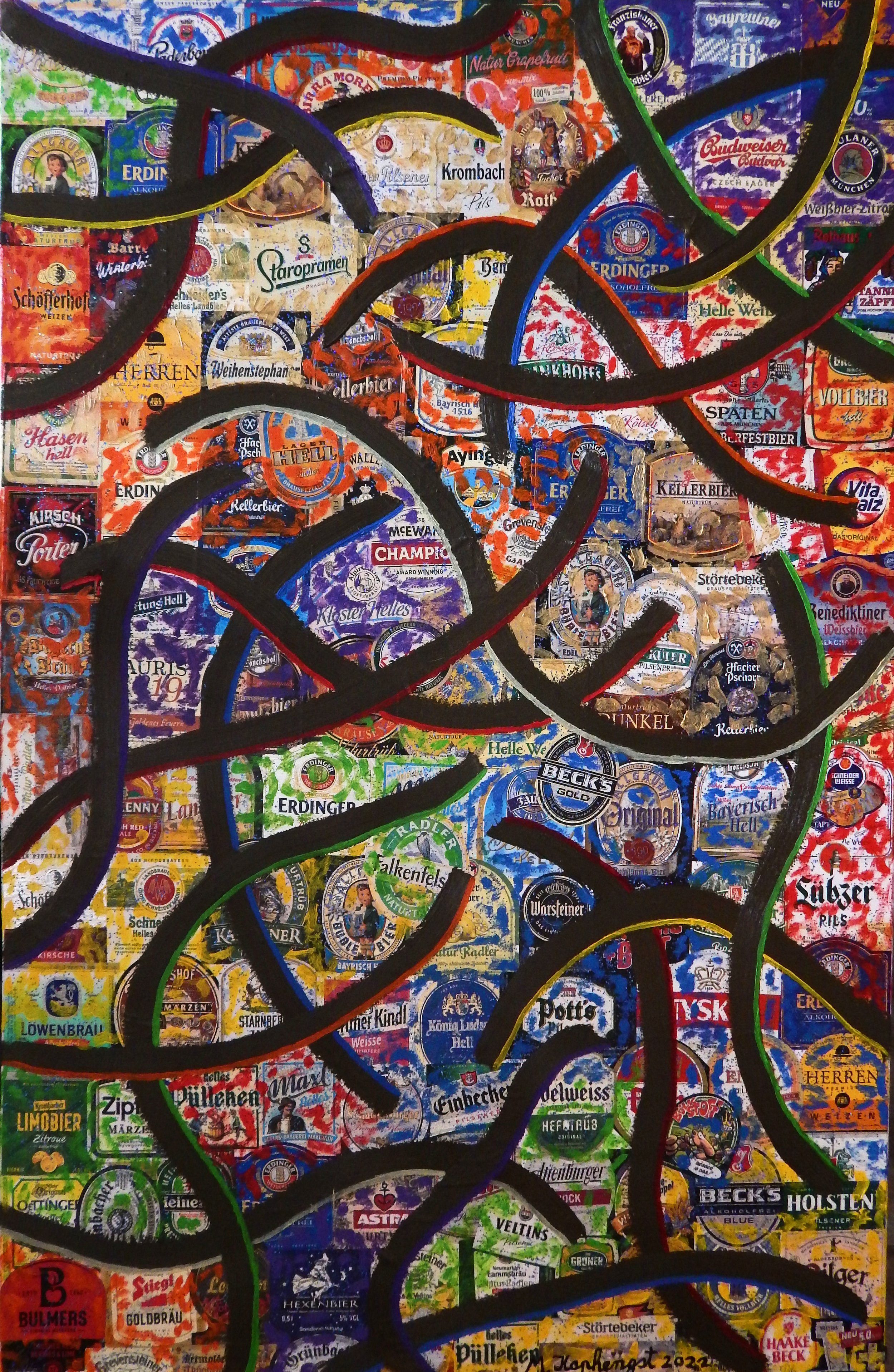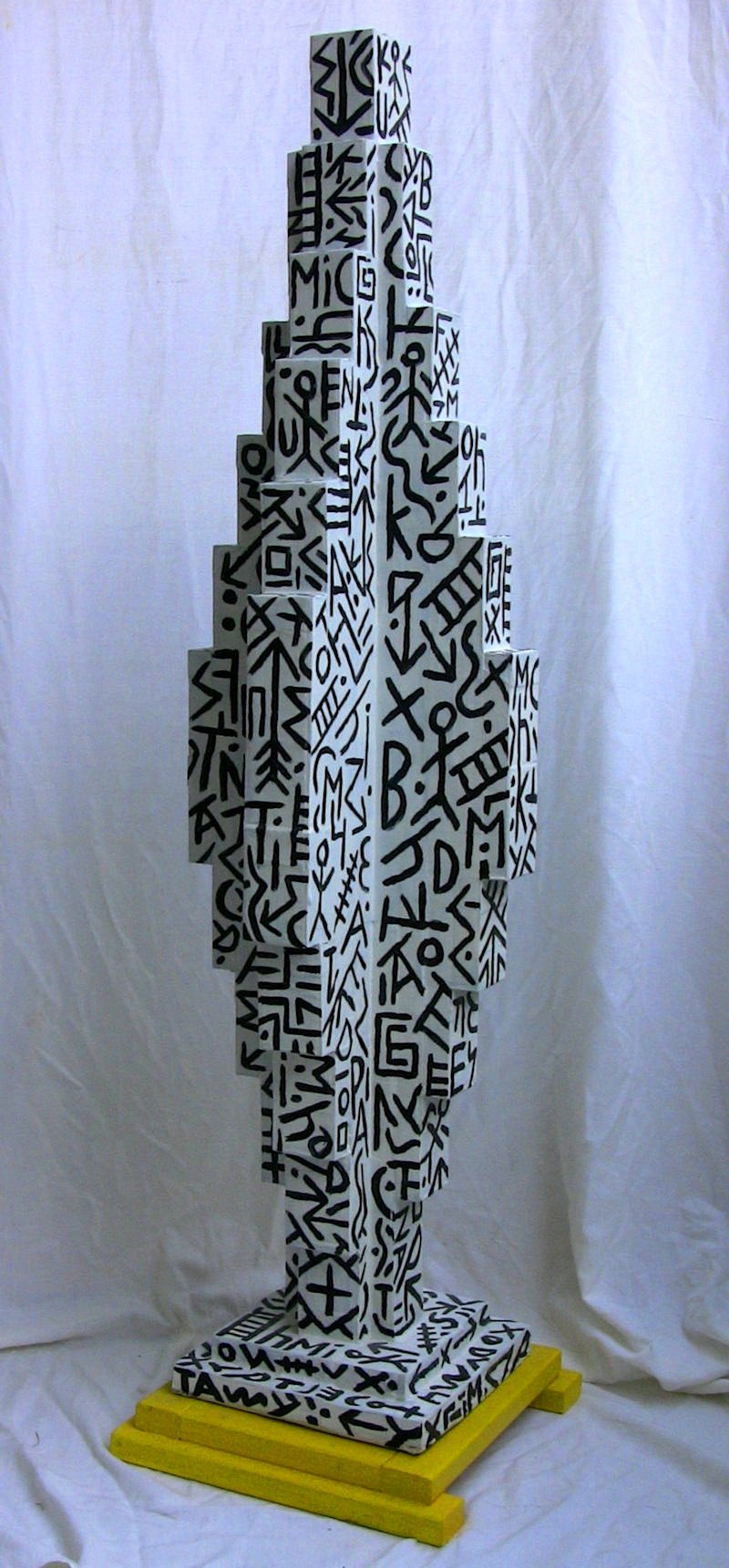Michael Kaphengst "THE LINEARIST"
Michael Kaphengst "THE LINEARIST". I don't leave the straightness any chance with my style, "Fencing Picture - absolute linearism", with a fixed brush on top of a rapier, I draw lines over the canvas. Drawn by circling lines over the drawing Paper, I call this"extreme linearism". It starts with the revolving movements of the pin, the motive condenses, therefore, to shape, and I extend these movements and this way the motive is drawn. The picture gets making dynamics by the one.
It is impossible to escape a linear process. For me, the consumer world is not pop but a linear process from which we cannot escape. This leads to the most surreal everyday situations; in my style, "consumptive surrealism" I put consumer goods surreally into the picture.
Whether fate or decree, I grew up in a village, and the street was called "Linienweg" (engl. Lineway).
Please tell us more about your background and how you began creating art?
When I was a teenager, shortly after Salvador Dali died, I watched a television tribute about his life and work which I was fascinated by. I bought myself some literature about Surrealism, did research and was so impressed that I began taking art classes at school and additional drawing courses with well-known artists from the region, something I still enjoy to this day.
The most interesting background is that I spent my youth in a small village called Berumbur (in the north of Germany in East Friesland) and the street we lived on was called "Linienweg" (English ‘Linewalk’), to me that held a specific meaning and couldn't have been a coincidence. Paul Klee famously said: “A drawing is simply taking a line for a walk.”
Later, during my actor training I learned fencing- part of the fighting techniques one learns at drama school- and thus the idea of "fencing pictures - absolute linearism" was born and developed.
What does your art want to say to the viewer?
I believe it is not possible to evade a linear process. To me, the consumer world is not POP as it is in the Pop art, but a linear process that we are exposed to every day and that leads to the most impossible
(Most surreal) everyday situations. Basically, I don't want to dictate what the viewer must think, each of my works of art speaks for itself and the viewer should let his imagination run free when looking at my works of art. Regardless of my initial intention for a painting, my experience is that everyone sees things differently.
Do you have a core philosophy that guides you in your creative expression?
The linearity in our everyday life. I believe that everything we do all day is subject to a process, whether at work, in private or in our free time. The processes are repeated every day, without ever getting out of them.
This philosophy has prompted me to call myself a "LINEARIST". I believe that, as an artist I should develop my own style. Typical to me, one that makes sense to me, and by which I can be recognized. If you look at the history of art, all well-known artists have eventually found their own style, one that is recognizable for them.
Which art marketing measures do you practice regularly that are the most successful for you?
Personal contact with curators and galleries and good contact with the media and publishers are still the most successful. When I started preparing for my first exhibitions, I immediately contacted local newspapers to promote my art. I also designed my own posters, made copies, got in the car and distributed them in the villages. I did this consistently for many years and it proved to be successful to make a name for myself.
Nowadays my art can be found in encyclopaedias all over the world and I do get approached a lot for interviews and publications. Something I am very happy about, as it involved a lot of work.
Can you tell us something about the process of creating your work? What does your everyday work look like?
To make art you need original ideas, that's why they are artists.
It all starts with an idea. It has been relatively easy for me to find ideas for motifs. For example, while listening to music suddenly a thought might pop up for a picture, I may replay the music, a song or instrumental piece, repeatedly to see if anything else pops up, (a feeling, an image, memories etc.) which I can use for a motif.
How much planning goes into each work of art?
When I have an idea for a motif and I sit in front of the canvas, I draw the motif and then I select the colours. Oftentimes, the idea I have in my head doesn't work the way I imagined it, so I will keep changing and experimenting. If it turns out that I can't solve my idea with a drawing- I don't call myself a great drawing artist- I consider whether I can think of an abstract composition, a collage, or a sculpture to realise my idea.
If I have spontaneous ideas, I write them down, although not all ideas will be implemented. I can get into ‘manic states’ wanting too much at once and overdo it. Like a trance. Yet, I have found myself creating work which I never thought I could do.
What is the essential element in your art?
As you can see from the first questions, the line is my dominant element, and I came up with original ideas on how to use the line/s. While experimenting with the line, I developed my various styles (extreme linearism, fencing pictures-absolute linearism and linearism-consumptive surrealism).
My ideas about linearism go right back to my childhood and upbringing, my way of looking at life and I believe I've succeeded in doing something that is specific to me, and which gives my work authenticity.
In your opinion, what is the role of the artist in society?
I believe that with his work, the artist can stimulate thought or feelings about what is going wrong in our society. I am not sure how much Influence an artist can have in society nowadays but thinking about what happened to artists in authoritarian regimes, they must have had an influence to change perceptions otherwise they wouldn’t have been banned or worse.
Whatever the case, I like how John Lennon formulated the role of an artist:
“My role in society, or any artist's or poet's role, is to try and express what we all feel. Not to tell people how to feel. Not as a preacher, not as a leader, but as a reflection of us all”.
Whatever the case, I believe all artists, whether famous or not, have one thing in common. They keep going and that's exemplary.
Are there any projects you are currently working on that you can talk about?
In February there is a promotional exhibition in Spain, where one of my artworks will be presented in the Madrid’s Metro station for 4 weeks. The work will be printed on a high-quality poster, with a barcode and my website address under the image. A wonderful opportunity for me and for people to see my art and find out more about it. I feel really excited about that.
In addition to this I just received an invitation for an exhibition in Vienna this summer.















